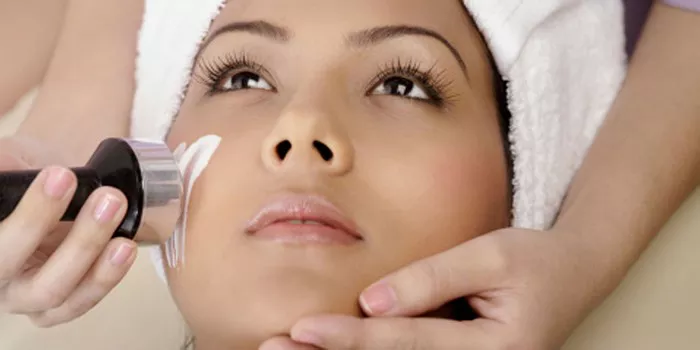Dermaplaning has become increasingly popular in recent years as a non-invasive way to exfoliate and remove peach fuzz from the face. However, many people wonder if dermaplaning is just another form of shaving. In this article, we will explore what dermaplaning is, how it differs from shaving, and the benefits and risks associated with this popular skincare treatment.
What is Dermaplaning?
Dermaplaning is a cosmetic procedure that involves using a sterile surgical scalpel to gently scrape the surface of the skin. This process removes dead skin cells and fine vellus hairs, also known as peach fuzz, from the face. The procedure is typically performed by a licensed aesthetician or dermatologist.
The process of dermaplaning involves first cleansing the skin to remove any makeup, oil, or dirt. The aesthetician or dermatologist will then use a sterile surgical scalpel to gently scrape the surface of the skin at a 45-degree angle. This process removes dead skin cells and fine vellus hairs from the face, leaving the skin smoother and brighter.
Dermaplaning is typically performed on the face, but it can also be done on other areas of the body, such as the neck and chest. The procedure is painless and does not require any downtime, making it a popular choice for those who want to improve the appearance of their skin without undergoing a more invasive procedure.
How is Dermaplaning Different from Shaving?
While dermaplaning and shaving may appear similar, there are some key differences between the two. Here are some of the main differences:
Tools: Dermaplaning uses a surgical scalpel that is specifically designed for the procedure, while shaving typically uses a razor.
Technique: Dermaplaning is performed at a 45-degree angle to the skin, while shaving is typically performed at a 90-degree angle.
Purpose: The purpose of dermaplaning is to exfoliate and remove dead skin cells and peach fuzz, while the purpose of shaving is to remove hair.
Results: Dermaplaning can result in smoother, brighter skin, while shaving can sometimes result in irritation and razor burn.
While both dermaplaning and shaving involve the removal of hair from the face, they are fundamentally different procedures. Dermaplaning is a specialized procedure that is performed by a licensed aesthetician or dermatologist, while shaving is a common grooming practice that can be done at home.
Benefits of Dermaplaning
Dermaplaning has several benefits for the skin, including:
Exfoliation: Dermaplaning removes dead skin cells and promotes cell turnover, resulting in smoother, brighter skin.
Peach Fuzz Removal: The removal of peach fuzz can help makeup go on more smoothly and evenly.
Product Penetration: After dermaplaning, skincare products can penetrate the skin more deeply and effectively.
Anti-Aging: Dermaplaning can help reduce the appearance of fine lines and wrinkles, as well as improve skin tone and texture.
Safe for All Skin Types: Dermaplaning is safe for all skin types, including sensitive skin.
Non-Invasive: Dermaplaning is a non-invasive procedure that does not require any downtime.
Dermaplaning can be a great option for those who want to improve the appearance of their skin without undergoing a more invasive procedure. The procedure is safe for all skin types and can provide a range of benefits, from exfoliation to anti-aging.
Risks of Dermaplaning
While dermaplaning is generally considered safe, there are some risks associated with the procedure. These include:
Irritation: Dermaplaning can cause redness, irritation, and sensitivity, especially if the skin is sensitive or the procedure is performed incorrectly.
Infection: If the scalpel is not properly sterilized, there is a risk of infection.
Scarring: While rare, dermaplaning can result in scarring if performed incorrectly.
Sun Sensitivity: After dermaplaning, the skin may be more sensitive to the sun, so it is important to wear sunscreen and avoid prolonged sun exposure.
It is important to choose a licensed aesthetician or dermatologist who is experienced in the procedure to minimize the risks associated with dermaplaning. It is also important to follow all aftercare instructions provided by the aesthetician or dermatologist to ensure the best possible results.
Who is a Good Candidate for Dermaplaning?
Dermaplaning is generally safe for most skin types, but there are some people who may not be good candidates for the procedure. These include:
Active Acne: If you have active acne, dermaplaning can exacerbate the condition and should be avoided.
Sensitive Skin: If you have sensitive skin, dermaplaning may cause redness, irritation, and sensitivity.
Skin Conditions: If you have a skin condition such as eczema or rosacea, dermaplaning may not be appropriate.
Blood Thinners: If you are taking blood thinners, dermaplaning may not be safe due to the risk of bleeding.
It is important to discuss any medical conditions or concerns with your aesthetician or dermatologist before undergoing the procedure. They can help determine if dermaplaning is right for you and provide guidance on how to prepare for the procedure.
Conclusion
Dermaplaning is a popular skincare treatment that can help exfoliate the skin and remove peach fuzz, resulting in smoother, brighter skin. While it may appear similar to shaving, dermaplaning is a specialized procedure that involves using a surgical scalpel to gently scrape the surface of the skin. While the procedure is generally safe, there are some risks associated with it, including irritation, infection, and sun sensitivity. If you are considering dermaplaning, it is important to choose a licensed aesthetician or dermatologist who is experienced in the procedure. With the right care and attention, dermaplaning can be a safe and effective way to improve the appearance of your skin.


